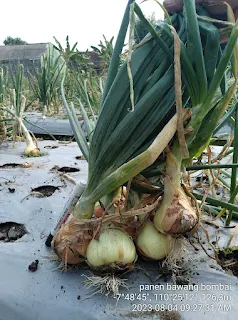Onion, a staple ingredient in cuisines worldwide, is not only valued for its flavor but also for its nutritional benefits. However, cultivating onions comes with its own set of challenges, including pest infestations and diseases that can significantly reduce yields if not managed effectively. Among the common pests and diseases affecting onion crops are thrips, onion maggots, damping-off, and downy mildew. Here, we discuss strategies for controlling these threats to ensure successful onion cultivation.
1. Integrated Pest Management (IPM): IPM involves combining multiple pest control tactics to minimize the use of chemical pesticides while effectively managing pests. This approach includes cultural, biological, and chemical control methods tailored to the specific pest or disease.
2. Cultural Practices:
- Crop Rotation: Rotate onion crops with non-host plants to break the life cycle of pests and diseases.
- Sanitation: Remove crop residues and weeds to eliminate potential breeding grounds for pests and pathogens.
- Proper Irrigation: Avoid overwatering to prevent conditions conducive to disease development.
3. Biological Control:
- Beneficial Insects: Introduce predatory insects such as ladybugs and lacewings to control pest populations naturally.
- Microbial Inoculants: Apply beneficial microorganisms like Bacillus thuringiensis (Bt) to target specific pests while minimizing harm to beneficial insects.
4. Mechanical Control:
- Row Covers: Use physical barriers like row covers to prevent pests from accessing onion plants.
- Handpicking: Handpick and destroy pests such as onion maggots when populations are low.
5. Chemical Control:
- Selective Pesticides: Use targeted pesticides that are effective against specific pests while minimizing harm to beneficial organisms and the environment.
- Fungicides: Apply fungicides preventatively to control fungal diseases like downy mildew.
6. Monitoring and Early Detection: Regularly inspect onion plants for signs of pest infestation or disease symptoms, such as yellowing leaves, wilting, or characteristic feeding damage. Early detection allows for timely intervention, minimizing crop damage.
7. Use of Resistant Varieties: Plant onion varieties that exhibit resistance to common pests and diseases prevalent in your region. Resistant varieties can offer an additional layer of protection against crop losses.
8. Organic and Sustainable Practices: Embrace organic and sustainable farming practices to reduce reliance on synthetic chemicals and promote environmental health. Practices such as composting, cover cropping, and soil conservation contribute to resilient onion crops.
Conclusion: Effectively managing pests and diseases in onion cultivation requires a holistic approach that integrates various control tactics. By implementing strategies such as integrated pest management, cultural practices, biological control, and early detection, farmers can safeguard their onion crops and ensure sustainable yields. Additionally, adopting organic and sustainable practices not only protects the environment but also contributes to producing healthier onions for consumption. Through proactive management, farmers can mitigate the impact of pests and diseases, ultimately enhancing the success of onion cultivation endeavors.





Tidak ada komentar:
Posting Komentar